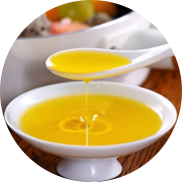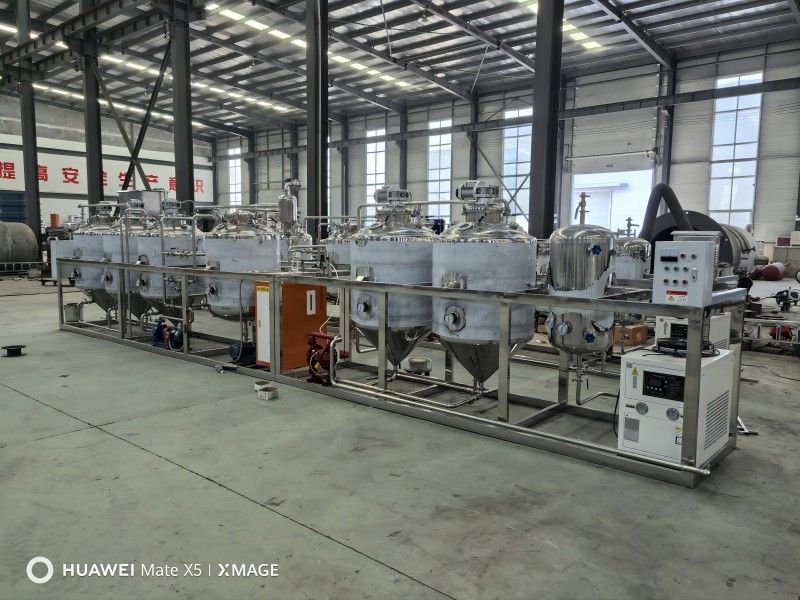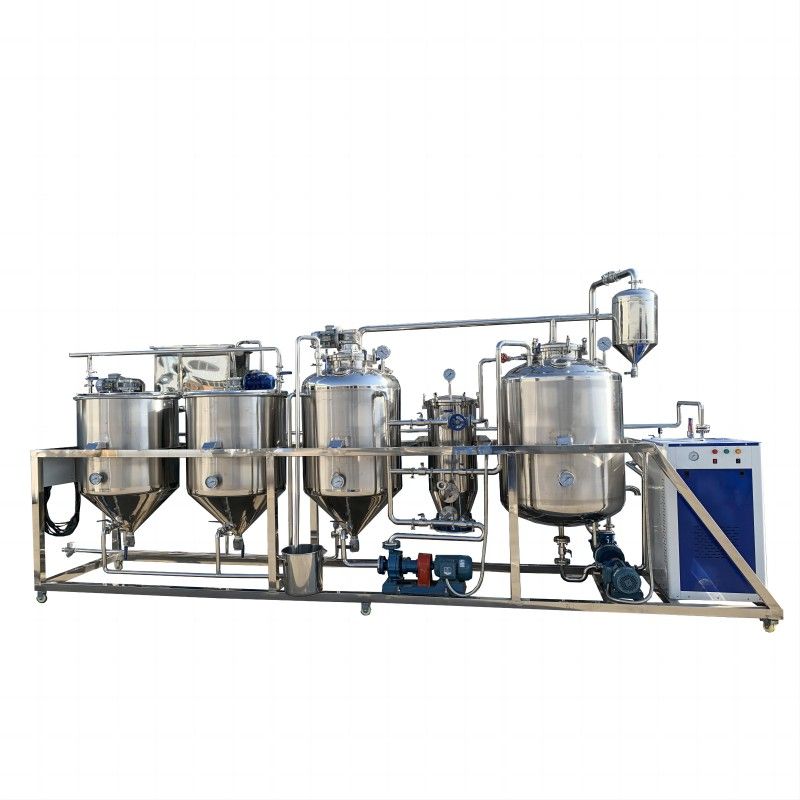153-0373-2222
138-3908-0089
The semi-continuous refining oil equipment can complete the processes of hydration, alkali refining, water washing, de-coloring, and de-odorizing. It employs electronic metering, high-speed centrifugal machines for soap separation, and vacuum (continuous) drying technology. It is primarily used for refining rapeseed oil, cottonseed oil, peanut oil, and linseed oil produced by pre-pressing-extraction and single-pass extraction processes. It is also suitable for the refining of animal fats such as lard, beef tallow, and mutton tallow, as well as rice bran oil, sunflower seed oil, and other oils.
Main Features:
- Utilizes a physical refining process that does not require alkali refining for de-acidification, avoiding the loss of neutral oil and significantly reducing production costs.
Process Flow:
Crude oil is pumped into the refining pot for de-gumming and neutralization. When the oil and soap are clearly separated and rapidly sink, stop stirring, allow to settle, and then pump the upper clear oil to the water washing pot. The soap foot is drained from the bottom to the soap foot container, and when it contains more oil, stop draining and pump the soap foot into the soap foot container. The remaining oil in the refining pot is mixed into the next pot for continued processing.
The clear oil from the refining pot is washed and then sent to the de-coloring pot for adsorption to the de-coloring pot for decolorization by white clay absorption.
After de-coloring, the oil is pumped into an air-separating vessel where it undergoes de-aeration. The oil is then pumped into an oil-oil heat exchanger to exchange heat with hot oil from the deodorizing tower, being heated to at least 180°C. From the oil-oil heat exchanger, the oil flows into a heat transfer oil heater, heated to 260°C. The hot oil is then pumped into a combined deodorizing tower where fatty acids and other relatively volatile odor-causing substances are removed in the packed section. It then enters a plate section for deodorizing and heat de-coloring. For oils with low acid values or those with lower requirements for finished oil acid values, the packed section can be skipped and the oil can be directly sent to the plate section for deodorizing and heat de-coloring.
De-acidification and deodorization are performed under high temperature and 3mmHg vacuum conditions, with vacuum generated and maintained by a four-stage steam jet pump system. After de-acidification and deodorization, the oil is pumped into a heat exchanger for heat exchange with oil to be deodorized, then into a cooler where it is cooled with water to a temperature not exceeding 70°C. It then passes through a fine filter for insurance filtration and is stored in the finished oil storage tank.
For oils like tea seed oil, rice bran oil, and corn germ oil, which have high acid values and high impurity contents, further de-waxing and degrease may be required.
Suitable Oils:
Rice bran oil, tea seed oil, corn germ, animal fats, and other oils with high acid values and high impurity contents.
Main Equipment:
Heat Exchanger, Air Separator, Heater, Combined Deodorizing Tower, Fatty Acid Collector, Cooler, Four-stage Steam Jet Pump, Heat Transfer Oil Furnace Unit



























































